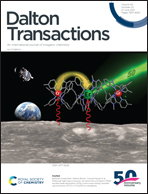Hierarchical core–shell 2D MOF nanosheet hybrid arrays for high-performance hybrid supercapacitors†
Abstract
Two-dimensional (2D) metal–organic frameworks (MOFs) with large surface area, ordered pores and ultrathin thickness have recently emerged as ideal electrode materials for supercapacitors (SCs). However, their straightforward applications are restricted by the drawbacks of self-stacking and unsatisfactory electrical conductivity. Herein, ultrathin Ni-MOF nanosheets have been grafted on zeolite imidazolate framework (ZIF-L)-derived porous Co3O4 nanosheets to form hierarchical core–shell Co3O4@Ni-MOF 2D nanosheet hybrid arrays. The porous Co3O4 “core” acts as a conductive skeleton for anchoring Ni-MOF and provides shortened ion diffusion paths. The Ni-MOF “shell” can expose large active sites. Benefiting from these merits and the synergic effects of the “core and “shell”, the Co3O4@Ni-MOF/NF shows a high specific capacity (capacitance) of 225.6 mA h g−1 (1980.7 F g−1) at 1 A g−1 with decent capacitance retention (82.2% after 2000 cycles). The asymmetric two-electrode cell assembled from Co3O4@Ni-MOF/NF exhibits an energy density of 37.05 W h kg−1 at a power density of 800 W kg−1 with good long-term durability (75% capacitance retention after 10 000 cycles). Moreover, two charged cells can power a red light-emitting diode (LED) for up to 16 min, manifesting the great promise of Co3O4@Ni-MOF/NF for real energy storage devices.



 Please wait while we load your content...
Please wait while we load your content...